Lesser Celandine / Spring / Summer / Edible
A very common, woodland plant, one of the first plants to flower in spring.
Common Names
Lesser Celandine, Spring Messenger, Pilewort
Botanical Name
Ficaria verna formally Ranunculus ficaria
Scientific Classification
Kingdom – Plantae
Order – Ranunculales
Family – Ranunculaceae
Physical Characteristics for Lesser Celandine
Leaves
The leaves are heart shaped, glossy and deep green. Very often with white or pale spots or blotches. The leaves are on long stalks and are up to 3-5 in diameter.
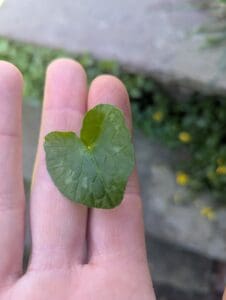
Flowers
The flowers are bright yellow, star shaped and have between 8-12 petals.
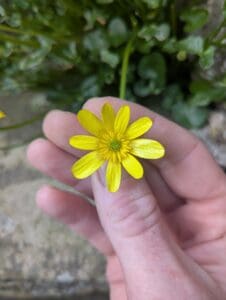
Roots
The roots are pale brown and are quite close to the surface. They are knobbly and fibrous. The common name pile wort comes from the appearance of the roots which are said to look like piles or haemorrhoids.
Habitat
Hedge banks, roadsides, river and stream banks and other areas that are seasonally flooded; deciduous woodlands, meadows and shady waste ground. They often grow where there is not a great deal of other vegetation.
Known Hazards
Leaves contain protoanemonin, but in minute quantities. Levels are said to increase as the plant comes into flower. Even so, the are most commonly advised to be eaten in moderation and cooked. Protoanemonin is destroyed by heat so all parts of the plant should be cooked before eating.
As a member of the buttercup family, lesser celandine may cause contact dermatitis in humans and animals.
The plant sap may also cause nausea and vomiting if taken internally; the plant’s safety during pregnancy or when breastfeeding is not established and therefore best avoided.
Many buttercup-family members are poisonous, including Britain’s most poisonous plant: Monk’s Hood, Aconitum napellus contains aconitine, a drug of ancient usage that slows the heart and relieves pain but can also kill. Stinking Hellebore, Helleborus foetidus and Green Hellebore, Helleborus veridis, are also highly toxic. None of these three look similar to Lesser Celandine.
Could be Confused with
It’s quite distinctive and flowers in early spring some when are not many lookalikes around.
Edible Uses
A late winter and spring hot wild salad or green vegetable – before it flowers.
Leaves look attractive in hot salads and add a mild flavour. In stir fry recipes the stems retain their succulent texture when cooked.
The plant’s roots swell up to form bulbs or tubers, which are reputedly delicious and can be eaten as a starchy vegetable. Lesser celandine has been used as a potherb in central Europe and the young parts of the plant have been added to salads.
Once the plant flowers the leaves are not really worthwhile.
Notes on Herbal Uses
The Lesser Celandine ( Ranunculus Ficaria) is also known as the Pile-wort, a name given to it in reference to the small tubers on the roots, which, following the doctrine of plant signatures, indicated that the plant was a remedial agent for haemorrhoids.
An ointment of the roots is said to cure corns and warts.
The leaves are high in Vitamin C and were apparently used by Christopher Columbus to prevent scurvy.
Extra notes from the Foragers
The plant appears a lot in literature, William Wordsworth wrote three poems about it and it also appears in The Lion the Witch and the Wardrobe by C.S. Lewis.
As one of the first flowers to appear after winter, they provide an important nectar source for queen bumblebees and other pollinators emerging from hibernation, and other early insects.



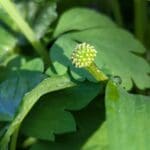
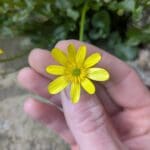
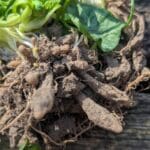
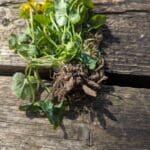
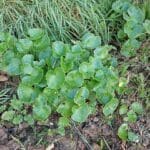
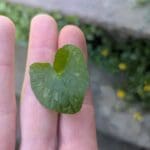



Leave a Reply
You must be logged in to post a comment.